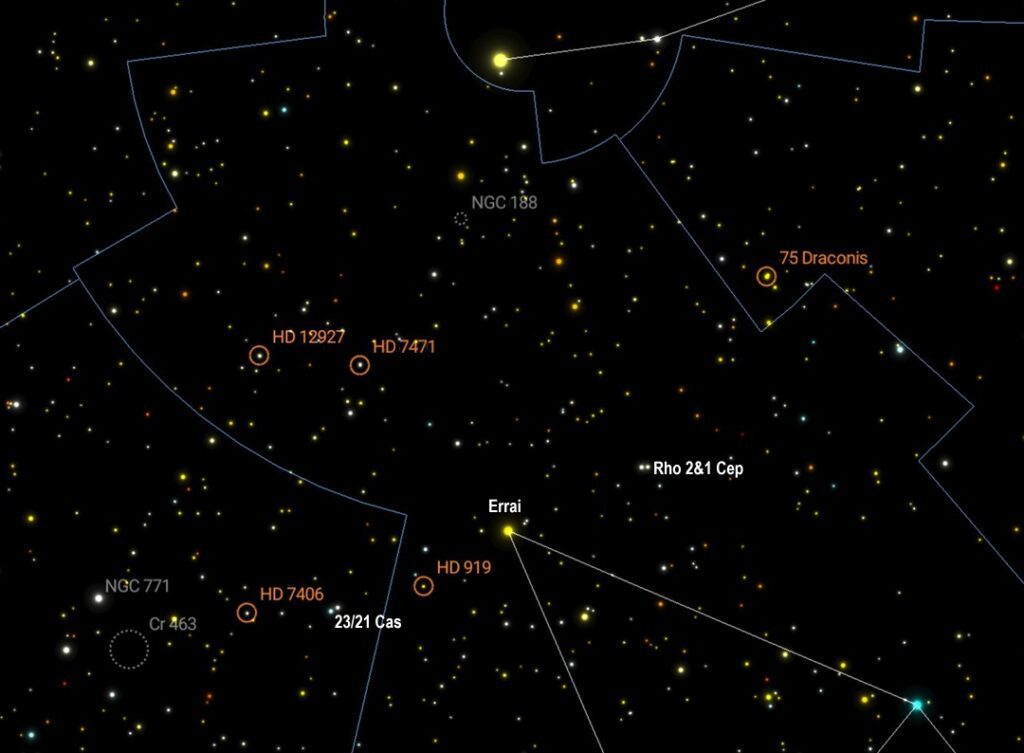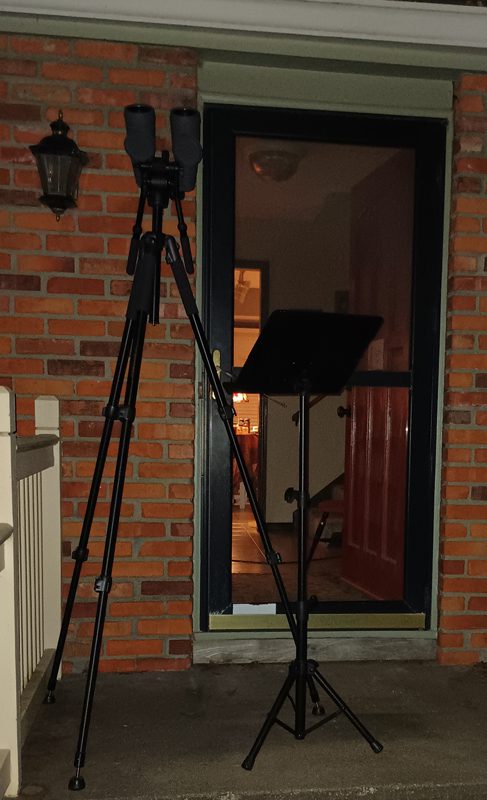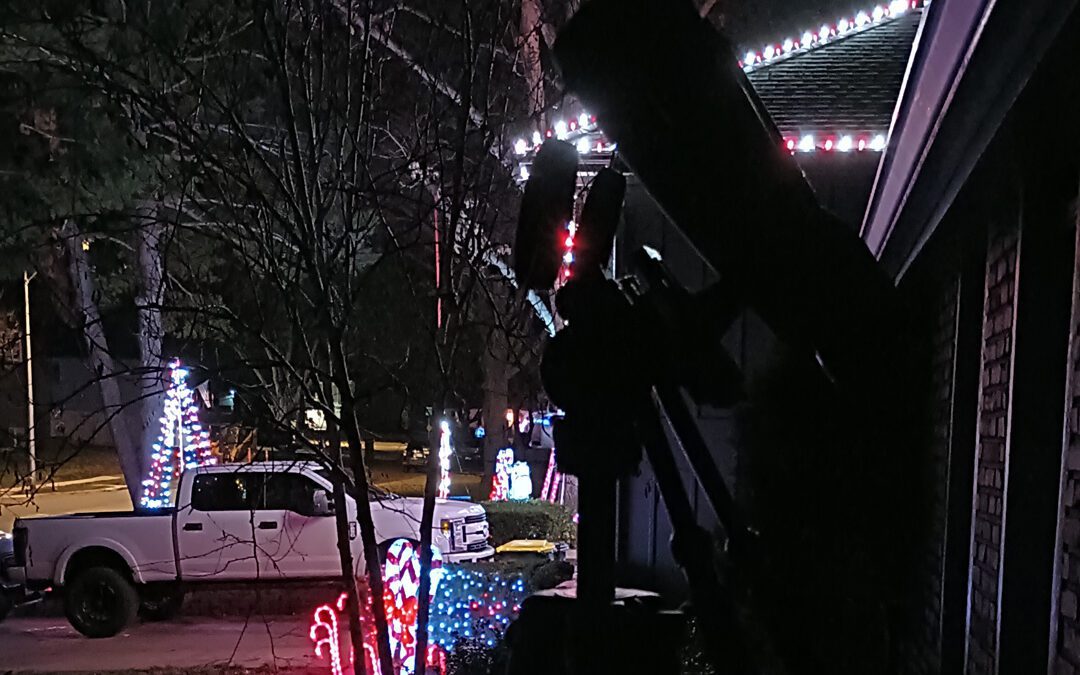December was not an ideal month for astronomy. It was mostly cloudy, and my next door neighbor’s Christmas Vacation style holiday lights are bright enough to cast shadows. 😆He is an awesome neighbor, though, very considerate about lights when I’m observing, and tis the season, so okay. The image above is my Oberwerk 20×70 ED Ultra silhouetted against his lights.
Friday evening, December 29, we finally had clear skies and my significant other wasn’t getting home until later so I went for a quick front porch binocular astronomy session with the 20×70, which has become my favorite grab-n-go quick session binocular. I followed up on this observing report from JoeFaz in the CloudyNights Adventures with Binocular Double Stars topic, comparing the double star HJ 2028 (which I’m not sure I have observed before) in Cassiopeia with Pi Andromedae. Here is a Sky Safari chart showing the position of HJ 2028 (annotated as HD 7406, lower left on the chart) along with a few other pleasing binocular doubles in the celestial neighborhood. The discoverer code “HJ” is for John Herschel (or a lowercase “h” in some catalogs), son of William Herschel, whose double star catalogues are described in the Pi Andromedae post (link provided below).

HJ 2028
01h66m +74*02′
7.06/7.88 sep 62.6″ pa 203.5*
Optical / Non-physical
Distance: 2417.76 / 1049.24 light years
Spectral Type: B9 / A0
Color Index: +0.04 white / +0.12 white
Joe points out in his observing report that the Pi Andromedae secondary, at 7.08 magnitudes seems shockingly tiny and faint compared with its 4.36 primary while the 7.06 magnitude HJ 2028 primary seems positively bright in relation to its 7.88 secondary. This is a pleasing and instructive comparison and easily done with a mounted 20x binocular.

Here is the 20×70 on the OB 4000 tripod pointed at HJ 2028. My favorite bird feeder binocular, a Nikon 7×42 EDG, can be seen on my kitchen table just below the music stand (which holds a tablet running Sky Safari). Joe also commented that he might have detected a slightly orangish hue to the HJ 2028 companion, which, indeed is a touch warmer than the primary, and while it may appear white in comparison to a more yellowish star (say in the +0.30 range) in comparison to the +0.04 BV primary the +0.12 secondary could easily appear to have a slightly orangish tint, such is the human sensitivity to comparative color values.
To locate HJ 2028 I started at Errai Cephei, which is a star in the primary Cepheus asterism and easy to locate even in urban skies. It’s a K1III giant with a color index of +1.03 and has a deep yellow / light orange tone to my eyes. Wide binocular pairs occur on either side of Errai — 23/21 Cassiopeiae to the east and Rho 2&1 Cephei to the west. Just to the southwest of 23/21 Cas is a quadrilateral of stars enclosing the open cluster Collinder (CR) 463, which is a fine subject for urban binoculars. Even with the Christmas lights Friday evening, I was able to pick out 16 or so cluster members, which despite being large and somewhat sparse still makes a distinctively cluster-like impression. HJ 2028 is between the CR 463 guide star quadrilateral and 23/21 Cas.
A double star similar to HJ 2028 can be observed just west of the 23/21 Cas pair, STTA 1, annotated as HD 919 in the chart above.
STTA 1
00h14m +76*01′
7.19/7.69 sep 73.69″ pa 103*
Optical / Non-physical
Distance: 1089.33 / 1392.22 light years
Spectral Type: M4III / G5
Color Index: +1.63 orange-red / +1.05 orange
The primary has an orange tint and the secondary is warm white. At a generous distance with the 20×70. Although the STTA 1 primary is slightly fainter according to the data, in observation the STTA 1 pair seems noticeably brighter than HJ 2028, which may be due to the STTA 1 secondary being brighter. Both primaries are also variable stars, so the magnitudes might differ from the catalog data, I suppose.

